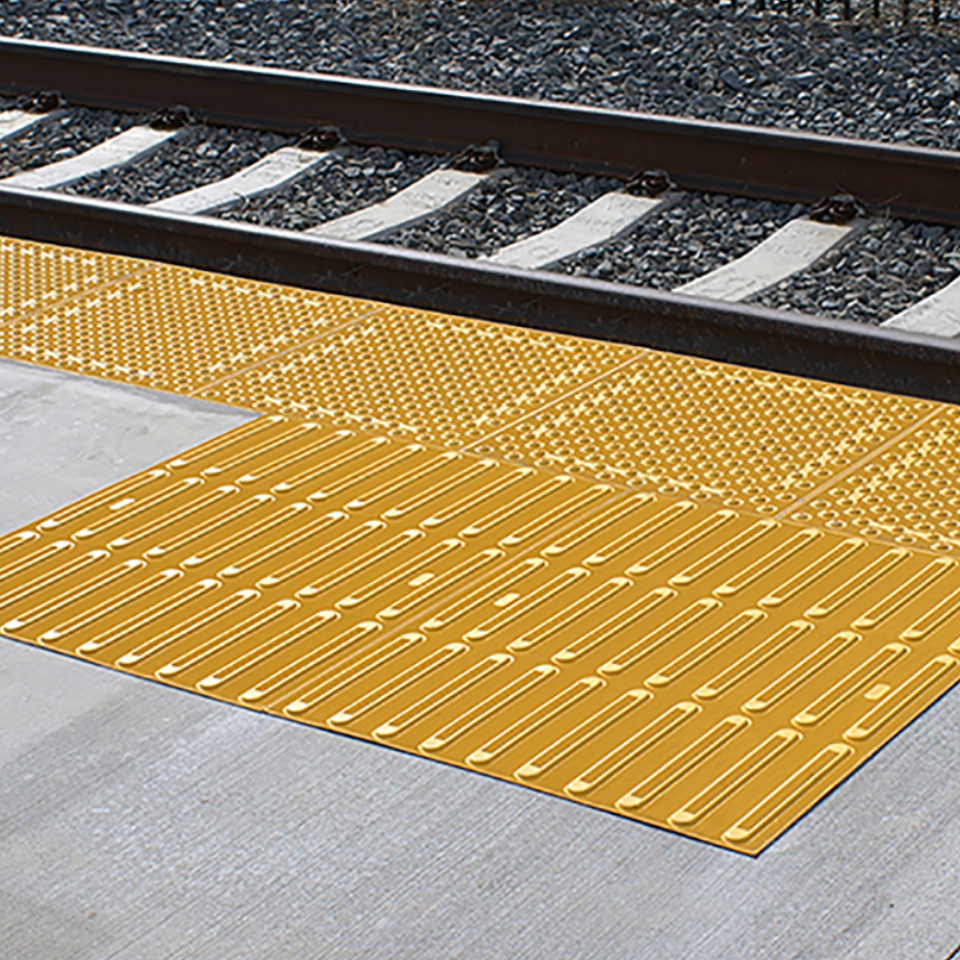
What Are Navigational Directional Bar Tiles?
Individuals with disabilities must navigate a world designed for people with vision and mobility, and one tool that helps to make the world more accessible is navigational bar tiles. These directional tile surfaces consist of raised bars that align with the direction of pedestrian travel. These navigational directional bar tiles help people to locate the entrance to light rails, trains, and bus stops.
A companion to detectable warning tiles, navigational and directional bar tiles serve an essential purpose of guiding individuals with disabilities in the flow of traffic.
Navigational directional bar tiles are tactile surfaces with elongated raised parallel bars. The intention is for individuals with low or no vision to be able to detect the tactile surfaces with a cane, ensuring they’re in a safe walking area. The elongated raised ridges also help individuals with vision impairments know what direction to walk.
Navigational directional bar tiles are useful in a variety of applications such as long pedestrian walkways, escalator approaches, transit platforms, and parking areas.
ADA Compliance for Navigational Directional Bar Tiles
The Americans with Disabilities Act (ADA) provides a set of guidelines for public spaces and accessibility. While the ADA sets out parameters for the size and placement of ADA detectable warning surfaces, it doesn’t always provide standards for applications such as navigational bar tiles. These navigational directional tiles often go one step more in creating an accessible world for all.
Since 2010, ADA only has standards for warning surfaces on transit platforms and wheelchair ramps. However, businesses and community spaces can be proactive in creating safe walking areas for all by using navigational directional bar tiles.
A vital component of navigational directional tiles is durability. They must withstand extreme weather variations, heavy foot traffic, and occasional vehicular crossing. Therefore, navigational directional tiles must be made out of the correct materials to remain safe for pedestrians and visually bright.
To further protect all pedestrians, navigational directional bar tiles need to provide a high level of slip resistance. Moreover, the application must remain slip-resistant throughout its entire lifespan.
Some of the best areas to use detectable navigational bar tiles are university campuses, parks, busy sidewalks, sports venues, airport applications, and public transportation facilities. New construction is the best way to outfit these areas with navigational tiles, although retrofitting conditions also offer a potential solution to serve these communities.
This slip resistance is anchored by a secure bond between the navigational bar tile and the concrete. StrongGo’s TekWay ADA detectable solutions use an installation process that secures the nano-engineered polymer concrete tiles into wet-set concrete with anchors.
Through ASTM Testing Results, Tekway ADA dome solutions have received the ASTM certifications guarantee for long-lasting durability and functionality. A low water absorption rate of less than 0.09% and a compression strength of greater than 16,800 psi enables TekWay high-performance ADA solutions to truly withstand the elements, resist deterioration, and deliver on reliability every step of the way.
At StrongGo, our TekWay high-performance ADA systems help create a more accessible world for everyone, and that’s exactly what we want. We create durable and aesthetically-pleasing ADA systems to fit any job large or small. Speak with an industry expert today by emailing csd@stronggo.com.


